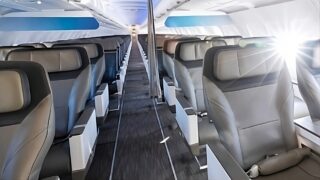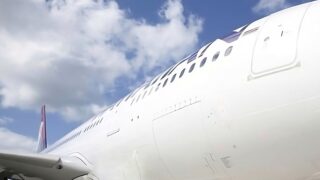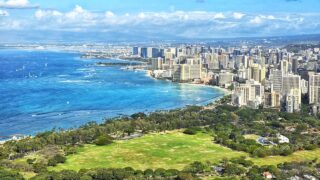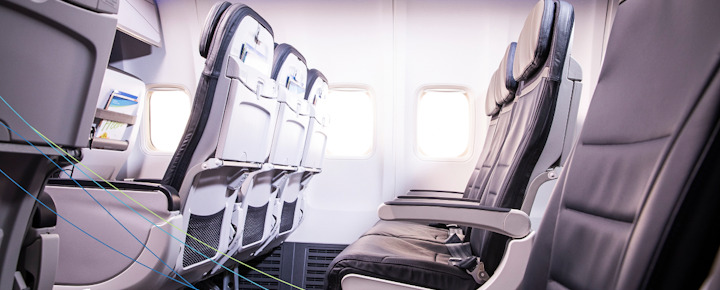A new and enhanced focus on premium-heavy seating could significantly impact Hawaii travelers. Delta Air Lines’ is leading the industry in shifting toward the next change that could significantly impact Hawaii travelers.
With plans to dedicate up to 50 percent of aircraft seating to premium categories, budget-conscious visitors are set to face fewer options and rising costs. For Hawaii, where tourism leadership already emphasizes “fewer visitors paying more,” this move may seem like a natural fit. But what does it mean for families, solo travelers, and those seeking more affordable access to the islands?
Hawaii’s mixed visitor market may shift even further.
Hawaii’s tourism economy depends on a wide range of travelers—from luxury seekers staying in beachfront resorts to budget-conscious families down market. Reducing the availability of economy seats could disrupt this balance even more.
Fewer economy seats mean tighter availability and potential price hikes for visitors who prioritize affordability. Kailua-Kona resident Joe P. expressed similar concerns in response to Hawaii’s short-term rental restrictions, noting, “Affordable flights to visit family have been a lifeline. If economy seating shrinks, I’m worried about how we’ll manage.”
Premium perks at a price may not appeal to all.
Delta’s increased focus on ever more novel premium revenue might attract high-spending visitors, but not all travelers are sold on the trade-off. Some frequent travelers to Hawaii value predictability over added costs for stripped-down premium fares. Wendy L., a business traveler to Oahu, shared her frustration: “I’m paying premium prices already. Stripping out perks like lounge access or seat upgrades means I’ll be paying even more for the same trip.”
This mirrors concerns raised during Hawaii’s Green Fee discussions, where visitors questioned the value of paying additional costs. Mike S. commented, “The visitor impact fee is a double-edged sword. While I support protecting Hawaii’s environment, I wonder if tourists will be willing to pay the extra cost, especially if it’s not clear how funds are spent.”
AI-driven fares add new traveler challenges.
Delta’s use of artificial intelligence to “personalize” ticket pricing, as other airlines do, could add more unpredictability for travelers heading to Hawaii. AI tailors prices based on real-time demand and browsing habits, often resulting in higher costs for last-minute bookings or peak seasons. Frequent traveler Tom M. remarked, “If AI continues to drive costs up, I might need to reconsider my long-time Delta loyalty.”
Read: This Airline To Revolutionize Hawaii Travel With Groundbreaking Innovations.
Technology like this just further complicates affordability for Hawaii-bound travelers. Many are already cautious of rising costs, as reflected in one visitor, Martin’s comment during a related debate: “Annual visitors are already deserting Hawaii by the thousands for other destinations due to exceedingly high costs. It is real and across the board.”
A broader look at fewer visitors paying more.
Delta’s premium-focused strategy aligns well with Hawaii’s push for fewer visitors spending more, but the implications extend far beyond the economy cabins of an airplane. This shift impacts Hawaii’s local economy, environmental goals, and competitive standing in the global travel market.
In Hawaii’s communities, fewer budget travelers could mean less foot traffic for local businesses. Restaurants, tour operators, and small shops, many of which rely on volume-driven tourism, may struggle to attract enough high-spending visitors, who tend to cluster differently in resort-heavy areas.
While luxury resorts and upscale experiences might thrive, competitors like Southwest and Alaska Airlines might or might not see this as an opportunity to attract more budget-conscious travelers by doubling down on affordability.
This could create a split market, where travelers seeking economical options try to pivot to other airlines or, more likely, to other destinations. Frequent traveler Barb F. warned, “Annual visitors are already deserting Hawaii by the thousands for other destinations due to exceedingly high costs. It is real.”
On the environmental front, fewer visitors could reduce the strain on Hawaii’s ecosystems, from Oahu’s Hanauma Bay to the fragile trails at Kauai’s Napali Coast. Yet, this could risk limiting access to Hawaii’s natural beauty to wealthier travelers, raising more questions about equity and exclusivity.
Travelers themselves will need to adapt to this changing landscape. Booking early, traveling during off-peak times, and exploring alternative routes may become even more essential strategies for those looking to keep costs down.
Ultimately, Hawaii and Delta are betting on a future where exclusivity replaces volume. Whether this model succeeds will depend on its ability to balance economic, environmental, and cultural priorities while maintaining the Aloha spirit that has drawn visitors to the islands for so long.
Hawaii’s leadership has championed the idea of fewer visitors spending more as a sustainable tourism model, which is now coming to roost at the airlines. One commenter noted that it is “backwards economic thinking,” adding, “The #1 reason less people are coming to Hawaii is the cost. Up 50%+ since 2019.”
While Delta’s premium-focused strategy aligns with this vision, it risks alienating the middle-market travelers who have historically been a key part of Hawaii’s tourism economy.
Please chime in!
Get Breaking Hawaii Travel News







OK, I think I see how this all fits together:
– Premium flights, impacting the middle-class traveler.
– Banning vacation rentals, impacting the middle-class traveler to pay premium prices for accommodations.
Fewer people, more money indeed. Sold by emphasizing the supposed “green” aspects as well as “alleviating” the homeless issue. Sounds like a complete plan.
Except: I think it’s a bad plan. I see the logic in it but I think unintended consequences are going to make this backfire spectacularly. No more bourgeoisie.
Delta’s new layout also addresses the woes of those complaining of cramped seating. As I’ve said in previous writings: if only premium seating were offered, there would be less crowding but the cost of the seats would increase which would make it unaffordable for some to travel. Space is expensive on airplanes. There’s no way around it.
On demand pricing has been around many many years. Delta has renamed it to “AI Driven” to sound hip and expensive. meh. When i think of premium seating…. 1st thing that comes to mind is more leg room. Is Delta really thinking of reconfiguring their Hawaii flights such that half the plane has more legroom? It’s more likely that Delta will give you Doritos and a coke premium class instead of peanuts and a water in coach. The legroom will be the same. You can only squeeze so much blood out of a turnip. Even the wealthier travelers are going to say enough is enough. Between the hotels, rental cars, restaurants and now airlines trying to squeeze more money out of fewer travelers, there won’t be any travelers going. Well, except for maybe Oprah, Gates, Bezos, Benioff and assorted other Billionaires. Who, BTW, have their own mansions and jets. I think Hawaii may be in a downward loop and they don’t realize it.
I understand the why, but I think it’s a mistake, especially with times being what they are, and people upset about inflation and other things. Telling people “we understand, and that’s why we’re Raising prices. We want you to have a premium travel experience. As a way to help you, we suggest not buying any food, or paying utilities, or bills, or taking your family out to dinner to celebrate a graduation or wedding, etc”. I’m lucky enough I can afford it, and I fly Hawaiian for the experience, but most can’t. Especially if you’re talking about families going, expenses go up exponentially. My Spidey senses tell me this will come back to bite the airlines in the a.
If the reset is an immediate success, which is not a given, wouldn’t it only temporarily reset to the lower volume. Then each new year you would be back to the old problem: to grow the economy, which is heavily dependent on tourism, you need to increase the amount of those higher paying customers visiting or expand to other demographics. So a reprieve of a few years, and then, back to the way that it ever was?
I read with interest this article about Hawaii & at least one airline concentrating on “premium seat tourists” PT. Hoping to attract tourists that have more money to spend assuming that they will spend more money in the islands. My family & I lived in the islands & have returned yearly for many years so I would like urge caution. I remember a few years ago that there was a discussion about tourists that treated the islands as one big theme park & everyone living on the islands as employees of the theme park that they could order around. I don’t think that’s what is wanted. Also have they done a pessimistic study on how much an average “economy seat tourist” ET spends & where they spend it versus how much & where the PT spends theirs & how many more PT would have to come to offset the loss of the money the ET would spend knowing that it’s not a 1 to 1 trade off. Another aspect is where does the money spent in the high-end places end up, on or off the islands?
Looks like inexpensive tickets just got harder to come by. It’s called supply and demand. Not only that it makes anyone flying economy having to board near closer to the end or last. Only a certain percent of economy get allocated for package,discount,offers. Good luck.
It’ll work till it doesn’t… JMHO…
Best Regards
Hawaii legislators need to break the monopoly the big airlines have on the islands and support/encourage more discount carriers to enter the market…think Allegiance.
When an airline incurs the expense of retrofitting aircraft with different seating configurations, it probably justifies the change on data identifying a revenue enhancement opportunity. Constraining economy seats could migrate prospective customers to higher fare “buckets” as the lower fares have fewer seats available.
On the other hand, the possibility exists that the carriers have overestimated the willingness of consumers to “bust the budget” on airfare, because the Hawaiian hospitality industry already uses this strategy. One more factor encouraging consumers to “vote with their feet” and vacation elsewhere.
Even Singapore Airlines found out that it would not offer an entire aircraft with premium seating on the Newark to Singapore route.